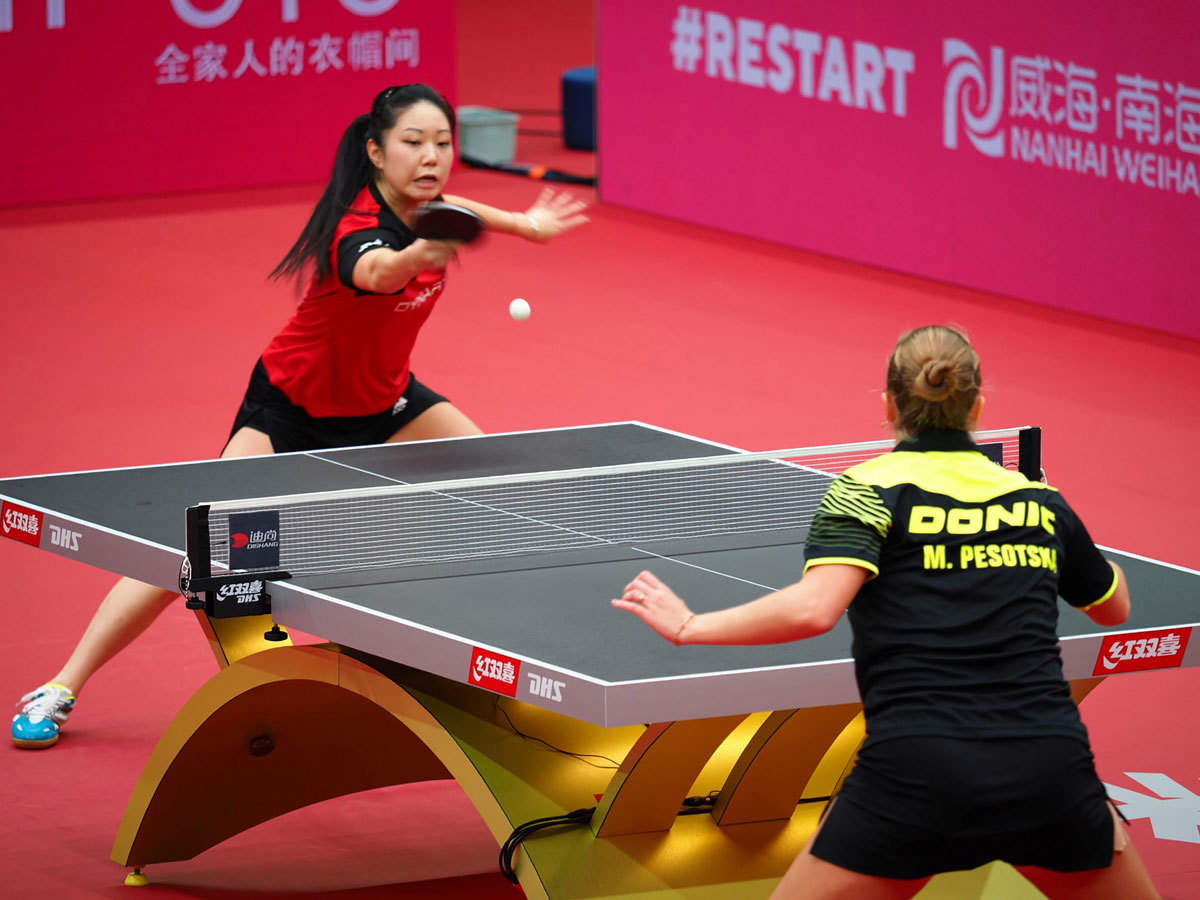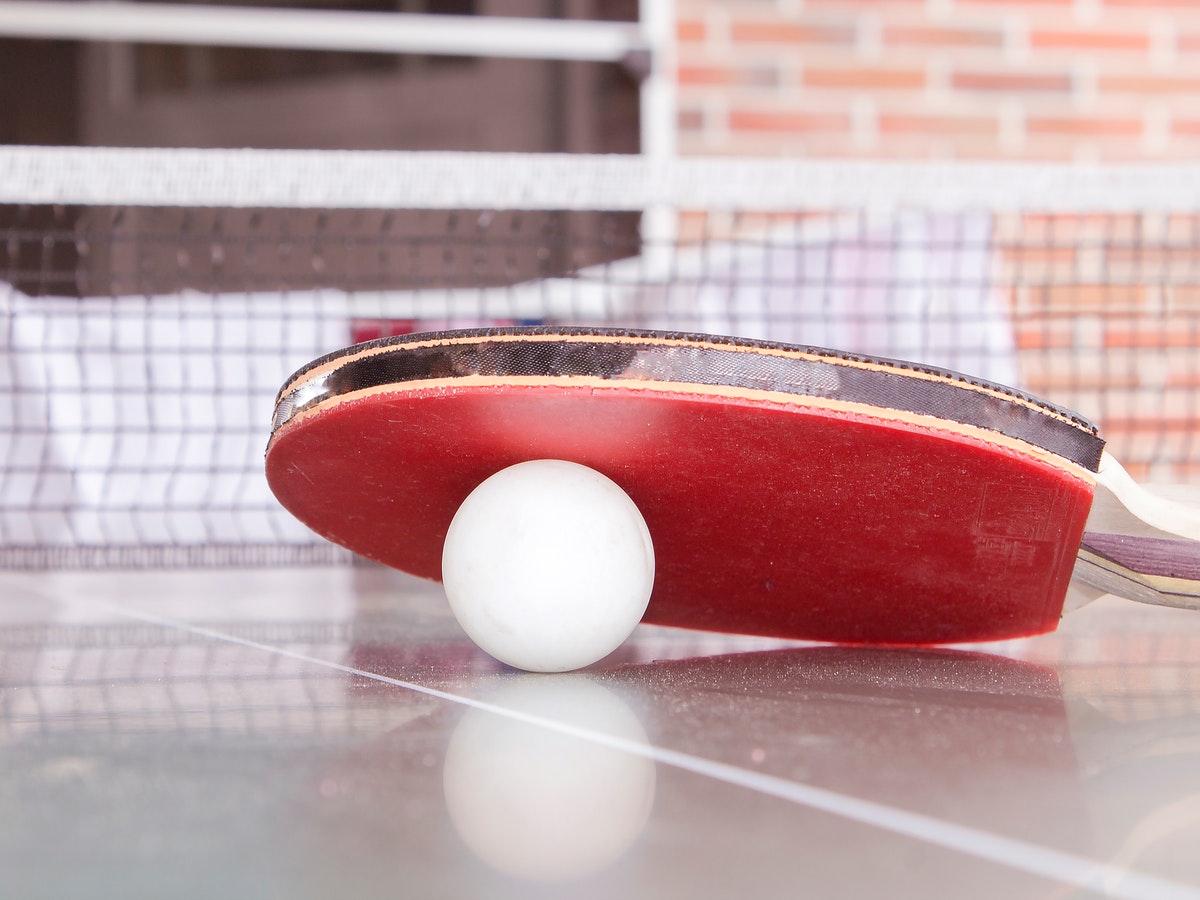Table Tennis / ping pong
Table tennis, also known as ping-pong and whiff-whaff, is a sport in which two or four players hit a lightweight ball.the game
The sport originated in Victorian England, where it was played among the upper class as an after-dinner parlour game. It has been suggested that makeshift versions of the game were developed by British military officers in India around the 1860s or 1870s, who brought it back with them. A row of books stood up along the center of the table as a net, two more books served as rackets and were used to continuously hit a golf-ball. The name “ping-pong” was in wide use before British manufacturer J. Jaques & Son Ltd trademarked it in 1901.
The name “ping-pong” then came to describe the game played using the rather expensive Jaques’s equipment, with other manufacturers calling it table tennis. A similar situation arose in the United States, where Jaques sold the rights to the “ping-pong” name to Parker Brothers. Parker Brothers then enforced its trademark for the term in the 1920s, making the various associations change their names to “table tennis” instead of the more common, but trademarked term.
The next major innovation was by James W. Gibb, a British enthusiast of table tennis, who discovered novelty celluloid balls on a trip to the US in 1901 and found them to be ideal for the game. This was followed by E.C. Goode who, in 1901, invented the modern version of the racket by fixing a sheet of pimpled, or stippled, rubber to the wooden blade. Table tennis was growing in popularity by 1901 to the extent that tournaments were being organized, books being written on the subject,[7] and an unofficial world championship was held in 1902. In those early days, the scoring system was the same as in lawn tennis.
playing surface
PlayPoint is offering Double Happiness 19mm table for Table Tennis / Ping Pong.



Playing RULES
Serves & Service Rules
- A table tennis match begins with the umpire conducting a coin toss. The winner has the option to serve the ball first, receive it, or choose the side of the table they’d like to play from.
- The server has to hold the ball with an open palm, toss it up and strike it in a manner that the ball bounces first on the server’s side of the table before bouncing over the net to the other side.
- The receiver, however, can return it by hitting it over the net and into the opponent’s half of the table. A foul is called if the player attempts to return the ball before it bounces.
- In singles competition, while the service rule allows the server to serve to any part of the table on the opposite end, the service has to travel diagonally across the table in doubles. Here, the serving player plays from the right side of the table.
Scoring Points
- The aim in table tennis is to strike the ball in a manner that the opponent fails to make contact with the ball, which earns the player a point. This can either be by sheer power, spin or other deceptive means.
- However, if the ball hits the net and it fails to bounce over into the opponent’s half, or hits it over the net and out of bounds without coming into contact with the table, the opponent gets a point.
- In doubles, the rule gets a bit more tricky. Here, the server and the partner have to alternate while attempting to push the ball onto the opponent’s side of the table. Here the service alternates as well.
- The opponent can also be awarded a point if you hit the ball outside the playing surface or if the ball comes in contact with any part of your body while attempting a shot.
How to win
-
According to the laws of table tennis, a player can win a game of table tennis by scoring 11 points – with one point awarded for every infringement. Every player gets to serve twice in a row. The first to 11 points is declared the winner.
-
If the points are tied at 10-10, a player then has to strive for a two-point lead to win the game.
-
A match is won by winning games. The number of games per match varies across competitions and categories.
-
While singles matches are usually a best-of-seven event, doubles are a best-of-five affair.